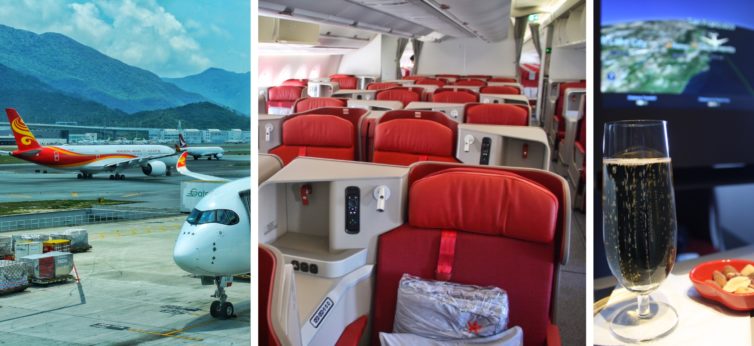
Hong Kong is a dazzling city. With a dazzling international airport. And some great hometown airlines. Though not the oldest or largest among them, Hong Kong Airlines has arguably been the most exciting over the past year, launching new long-haul routes to North America on the wings of its small new fleet of Airbus A350s. With that unique aircraft’s help, the airline launched service to Los Angeles, San Francisco, and Vancouver over the past year.
We have a blast reviewing airlines for the first time, and we got to do exactly that with Hong Kong Airlines on a flight to its Hong Kong (HKG) hub from San Francisco (SFO), barely a month after the route launched. From the fresh and roomy business class seats to the impressive dining experience, we found a lot to get excited about. Plus there’s the AvGeek joy of flying on the relatively new A350!

Read on for plenty of photos, videos, and thoughts on Hong Kong Airlines’ A350 inflight experience.
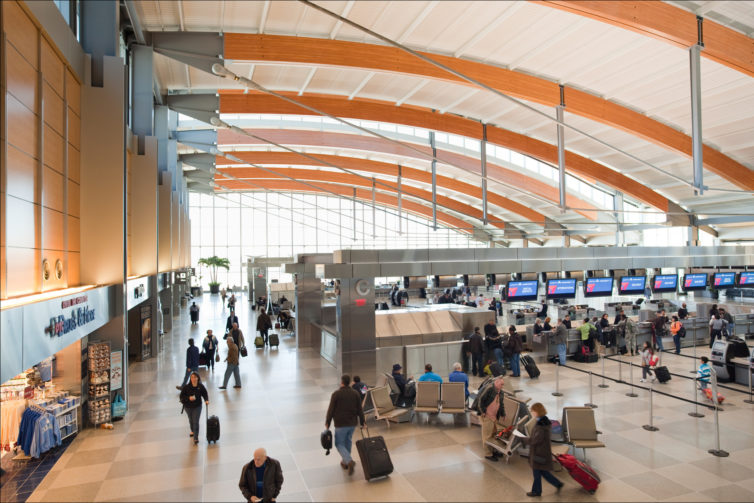
RDU’s stunning Terminal 2 ticketing area – Photo: RDU Airport Authority
Two cities on either side of the country have become the epicenter of a battle royale that would make wrestling promoter Vince McMahon proud. Put on your best ring announcing voice and proclaim this the ’œBattle of SEA and RDU!’ (rolls off the tongue better than “Seattle-Tacoma International Airport versus Raleigh’“Durham International Airport)
Through a TV news and PR career, I’ve lived in some cities I would have never imagined, including six years in Raleigh, NC (2001 to 2007). Back then, American Airlines dominated with regional jet service to smaller cities and big planes to major hubs of Chicago, Dallas, Miami, and New York.
Delta mainly flew to Atlanta and Cincinnati. You also had the option of Northwest Airlines to its hub cities of Memphis, Minneapolis, and Detroit. One city not on the list back then was Seattle. I flew out to the Emerald City in 2005 to see my Minnesota Twins in the baseball opener via a connection in Minneapolis on Northwest.
What a difference a decade makes. Thanks to increased competition and more nonstop flights to cities that were once ignored by the airlines, the consumer has more choices than ever as Seattle and Raleigh, NC have two nonstop flights that started within the past two years. RDU also has a stunning updated terminal that makes Sea-Tac’s 1970’s airport look even worse than its brown facade and cramped restrooms seem.
Alaska was first with nonstop Seattle to Charleston, SC and Raleigh, NC flights. It was a roll of the dice for Alaska, who does not have much brand recognition east of the Mississippi. The Charleston flight was literally a gift to Boeing, since so many of its employees shuttle between the two cities (due to their 787 factory there). Raleigh has a big tech and pharmaceutical community, so the airlines are banking on that business.
Alaska says the risk is worth the reward.
“We are all about providing nonstop access to destinations like Charleston and Raleigh making travel convenient and efficient for our guests,” Alaska spokesperson Ann Johnson tells AirlineReporter. “Since we started service in Charleston and RDU, we have increased it based on the demand. We have increased the number of days of week that we operate the Charleston service. At RDU we launched a second destination to SFO last year. Alaska offers the most nonstop service out of Seattle to top destinations.”
Delta did not respond for comment on this story.
I had a personal flight recently on Delta (I paid for and did not receive any perks for doing this story) and thought why not break down the service.
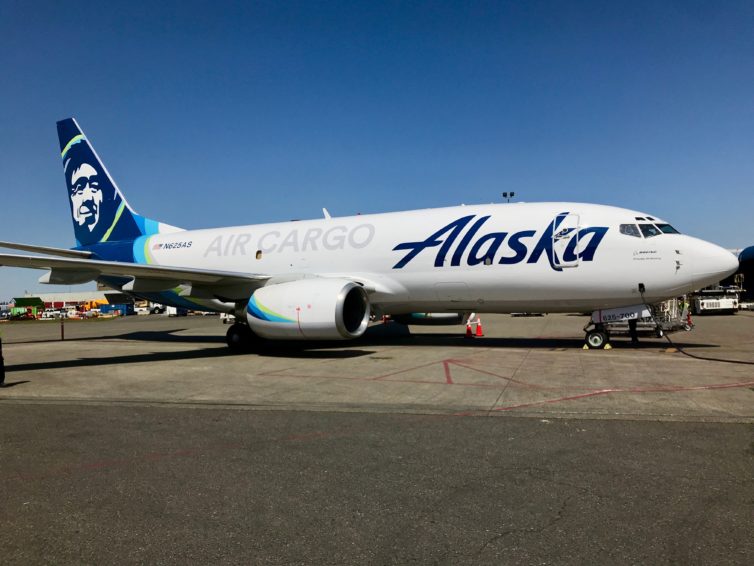
One of Alaska Airlines three newly-converted 737-700 freighters on the ramp at Seattle-Tacoma International Airport
Ever wonder about the process of loading, unloading, organizing, tracking, and planning the cargo side of a cargo flight?
Wonder no more Alaska Airlines recently invited us to watch (and then ask a metric ton of questions about) one of the airline’s new 737-700 freighters on a recent visit to Seattle-Tacoma International Airport.
“Alaska Air Cargo serves as a lifeline to many of the communities in Alaska where we fly,” said Jason Berry, managing director of cargo for Alaska Airlines.
“Offering reliable and consistent service is critical for us. The addition of our modern fleet paired with our proprietary navigation procedures allows us the ability to bring true scheduled service to the far north,” he said.
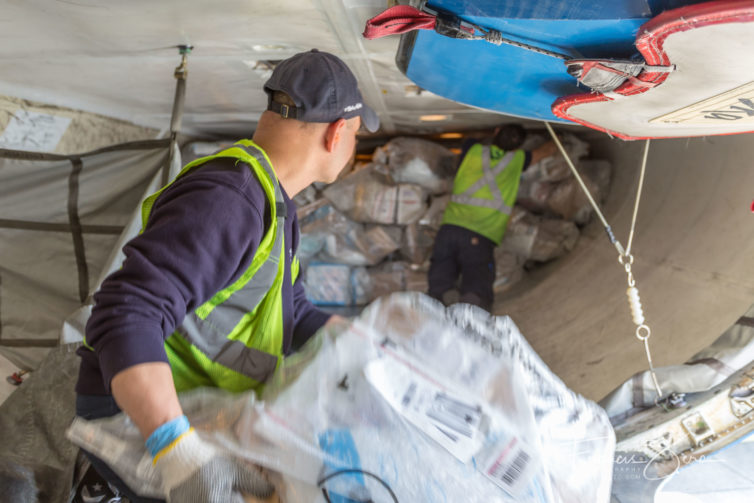
Alaska Airlines Ramp Service Agent (RSA) Carlos Arenas, foreground, prepares to pass a bag of mail to Lead RSA Metin Mehmedov. Both are working in the aft belly hold of the aircraft.
In preparation for the induction of Alaska’s first Boeing 737 MAX aircraft, the company’s strategy was to retire the remaining 400-series ’œclassics’ from its fleet. The five combis and single dedicated freighter were all 400-series aircraft.
According to Berry, those 400s were also getting extremely cycle-heavy, which meant they had so many takeoff/landing cycles that they were nearing the end of their useful life for Alaska Airlines.
“The decision to convert three 737-700 Next-Gen passenger aircraft to freighters meant we retain much of the same fleet commonality in terms of training and maintenance and it would give us the right-sized aircraft to still serve all the same communities we provide main deck cargo lift to today (-800s could not land at some of our current scheduled airports such as Adak, Kodiak, Petersburg, and Wrangell),” he explained.
And what’s become of those old cargo planes? Berry said all six were sold to leasing companies. “I believe you can find them for sale as we speak. I speculate that someone will eventually purchase the aircraft and convert them to full freighters.”
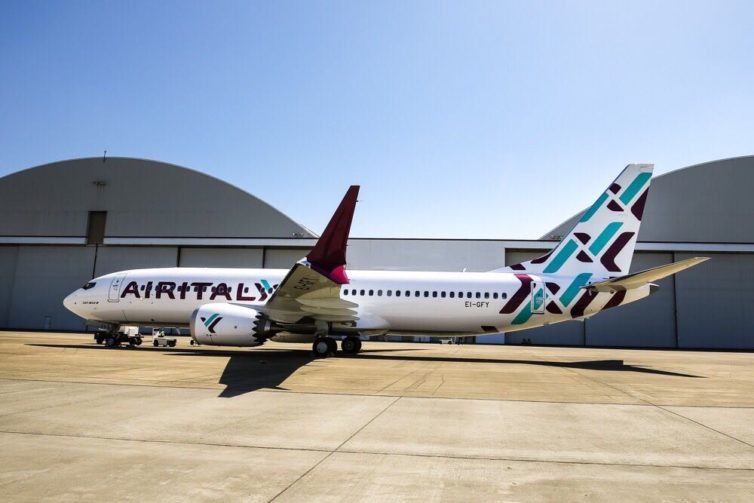
Brand-new Air Italy 737 MAX 8 looking sharp – Photo: Air Italy
This past Friday, Air Italy received their first 737 MAX 8 aircraft at a delivery ceremony at Paine Field in Everett, WA. Dignitaries from Air Italy were joined by his Excellency Mr. Akbar Al Baker, Group CEO for Qatar Airways. In July of 2016, Qatar Airways agreed to purchase a 49% stake in the airline (known previously as Meridiana), with the brand being re-launched as Air Italy in March 2018. As with any event involving Mr. Al Baker, this was a fancy affair, and included a few priceless soundbites.
When the Air Italy brand launched earlier this year, they announced their goal to disrupt the Italian market, and create a ’œcredible alternative’ for Italians. From their home base of Milan’“Malpensa Airport, Air Italy intends to offer both short- and long-haul routes. The airline will shortly be launching flights to the United States, with a daily service to New York (begins 6/1) and four-times-per-week service to Miami (starts 6/8). The next planned long-haul destinations for Air Italy are Bangkok and Mumbai, with service start dates yet to be announced.
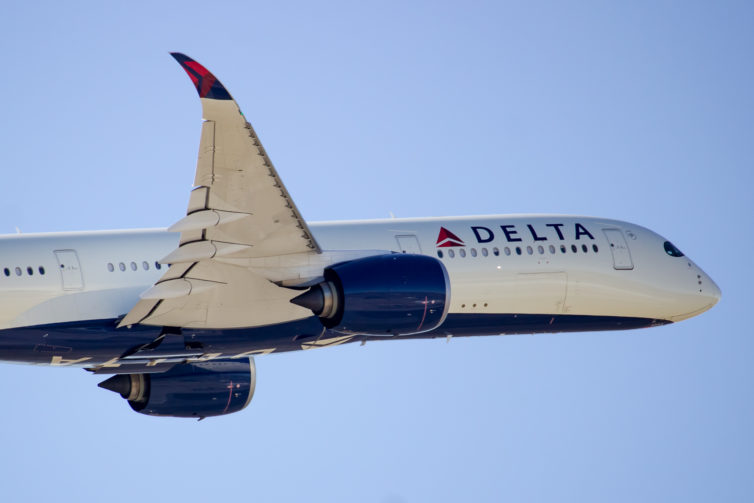
A Delta A350 departs DTW, Delta’s primary airport for the plane type – Photo: © Andrew Poure
If you’re like me, you’ve been biding your time waiting for the perfect opportunity to fly the Airbus A350. AirlineReporter is written for AvGeeks, by AvGeeks, after all. With United continually deferring deliveries, and American’s recent Dreamliner-over-A350 switcheroo, I must confess, I didn’t have high hopes for checking this long-sought line item off of my increasingly more lengthy to-do list anytime soon. Enter the Delta A350 and the need to re-position a brand-new flagship from one hub to another. Click through, friends, you’ll want to be on this flight.






